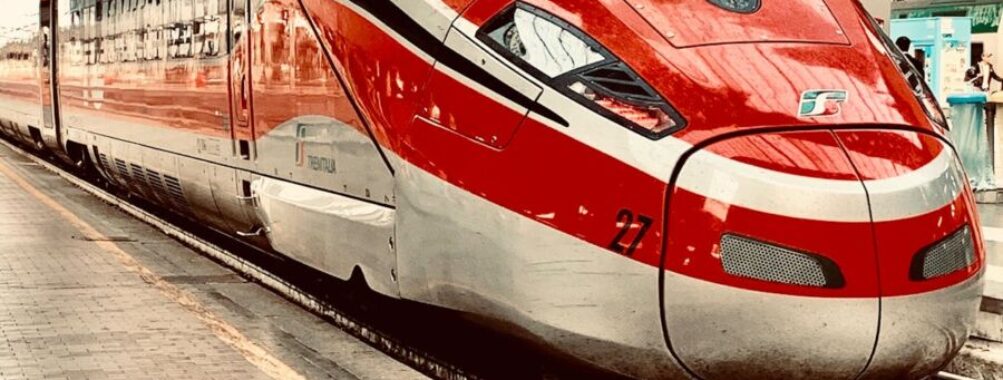
The Newest 478-Mile High-Speed Train Route Connecting Spain’s Top Destinations
Spain boasts an impressive high-speed rail network, second only to China in size. With over 3,200 kilometers of tracks, the AVE (Alta Velocidad Española) system connects major cities across the country, offering travelers a fast and comfortable alternative to flying or driving.
The Madrid-Seville line, completed in 1992, revolutionized travel between these two iconic Spanish cities, reducing the journey time to just 2 hours and 30 minutes. This route passes through Ciudad Real, Puertollano, and Córdoba, providing easy access to the diverse landscapes and cultural attractions of central and southern Spain. Passengers can choose from three travel classes on AVE trains, each offering modern amenities and high-quality service.
The extensive AVE network now includes routes from Madrid to Barcelona, Valencia, Málaga, and León, among others. The Madrid-León line features Spain’s longest railway tunnel at 28 kilometers and extends service to Gijón in the north. With trains capable of reaching speeds up to 330 km/h, the AVE system continues to expand, making exploration of Spain’s rich heritage and vibrant cities more convenient than ever.
Contents
Route Overview

Spain’s high-speed rail network spans over 3,200 kilometers, connecting major cities across the country. The primary operator, Renfe, runs the AVE (Alta Velocidad Española) service on these routes.
Madrid serves as the central hub for most high-speed lines. Key routes include:
- Madrid to Barcelona: A popular line covering 621 km in about 2.5 hours
- Madrid to Seville: One of the oldest high-speed routes, traversing 471 km in 2.5 hours
- Madrid to Valencia: Connecting the capital to the Mediterranean coast in 1.5 hours
Other significant connections include:
- Barcelona to Málaga
- Madrid to León
- Madrid to Alicante
The network also extends to France, with services from Barcelona to Paris.
Notable stops along routes:
- Zaragoza (Madrid-Barcelona line)
- Córdoba (Madrid-Seville line)
- Valladolid (Madrid-León line)
- Cuenca (Madrid-Valencia line)
AVE trains reach speeds up to 310 km/h on these routes, making them among the fastest in Europe. The extensive network allows travelers to efficiently explore Spain’s diverse regions and major cities.
Key Stops

Spain’s high-speed rail network connects major cities across the country. The Madrid-Barcelona line is one of the most important routes, covering 621 km in just 2.5 hours.
Madrid, the capital, serves as a central hub for many high-speed lines. From here, travelers can reach numerous destinations quickly and efficiently.
Barcelona, a vibrant coastal city, is another crucial stop. It’s well-connected to other parts of Spain and even extends into France.
Other significant stops include:
- Zaragoza
- Seville
- Valencia
- Málaga
- Alicante
- Córdoba
These cities offer access to diverse regions of Spain, from the Mediterranean coast to the southern Andalusian plains.
The AVE network also reaches smaller cities, enhancing connectivity across the country. Stops like Toledo, Cuenca, and Valladolid benefit from high-speed rail links.
France is accessible via the cross-border connection from Barcelona to Paris, with stops in Girona and Figueres along the way.
As Spain continues to expand its high-speed network, more cities are being added as key stops, improving travel options for both domestic and international passengers.
Train Amenities

High-speed trains in Spain offer a range of amenities to ensure comfortable journeys. Passengers can choose between Standard and First Class seating options, with spacious seats designed for long-distance travel.
Most trains provide onboard Wi-Fi, allowing travelers to stay connected throughout their trip. Power outlets are available at each seat, enabling passengers to charge their devices.
Dining options include a cafeteria car serving hot and cold meals, snacks, and beverages. Some trains also offer at-seat meal service for First Class passengers.
Large windows provide scenic views of the Spanish countryside as the train speeds between cities. Luggage storage areas are conveniently located near the seating areas.
Many high-speed trains feature:
- Air conditioning
- Onboard entertainment systems
- Accessible facilities for passengers with reduced mobility
- Quiet zones for those seeking a peaceful journey
Key stops along popular routes include Madrid, Barcelona, Seville, and Valencia. These major cities serve as hubs for Spain’s extensive high-speed rail network.
Ticket Pricing
AVE high-speed train tickets in Spain offer flexible pricing options. Fares vary based on factors like travel class, route, and booking time.
Standard fares typically range from €30 to €200 for popular routes. Madrid to Barcelona, a key connection, usually costs between €60 and €150.
Early booking can secure significant discounts. Renfe often releases promotional fares 2-3 months in advance, with prices as low as €25 for some journeys.
Different ticket types are available:
- Promo: Non-refundable, cheapest option
- Promo+: Allows changes for a fee
- Flexible: Most expensive, fully refundable
First Class tickets offer added comfort but come at a premium, often 30-50% more than Standard Class.
Key stops along the AVE network include:
- Madrid
- Barcelona
- Seville
- Valencia
- Málaga
These cities typically have more frequent services and competitive pricing. Smaller stations may have limited options and higher fares.
Renfe’s loyalty program, +Renfe, offers points on purchases that can be redeemed for future travel, potentially reducing costs for frequent travelers.
Eco-Friendly Travel Benefits

High-speed train travel in Spain offers significant environmental advantages. Trains produce considerably lower carbon emissions per passenger compared to cars and planes.
The extensive rail network reduces reliance on fossil fuels and helps combat air pollution in major cities. This contributes to improved air quality and public health outcomes.
Energy efficiency is another key benefit of Spain’s high-speed trains. Modern rail technology allows for optimal use of electricity, minimizing overall energy consumption.
Key stops along Spain’s high-speed routes include:
- Madrid
- Barcelona
- Seville
- Valencia
- Málaga
These major cities are now connected by sustainable transport options. Travelers can reduce their carbon footprint while still enjoying efficient journeys between destinations.
Train travel also promotes sustainable tourism practices. It allows visitors to access multiple regions with minimal environmental impact, supporting local economies responsibly.
The expansion of high-speed rail in Spain has led to a decrease in domestic air travel. This shift helps lower overall transportation-related emissions across the country.
By choosing train travel, passengers actively participate in Spain’s efforts to meet climate goals and transition to more sustainable modes of transport.



